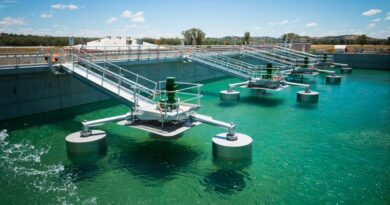Global water storage steadily declining due to warmer climate

Drastic changes in the rainfall patterns and rising temperatures globally have led to steady decline in global water storage, a new research study has revealed.
Rising atmospheric and ocean temperatures have caused substantial changes in terrestrial water circulation and land surface water fluxes, such as precipitation and evapotranspiration, potentially leading to abrupt shifts in terrestrial water storage (TWS), the study led by scientists from the South Korea’s Seoul National University and University of Melbourne in Australia, has found. TWS includes soil moisture, groundwater and surface water bodies.
As climate has warmed, precipitation and evapotranspiration changes have affected land surface water fluxes. The research team combined soil moisture data from satellites, measurements of sea level, and observations of polar motion to estimate terrestrial water storage over the past four decades, which revealed a dramatic decline. During the interval from 2000 to 2002, terrestrial water storage decreased by nearly twice as much as Greenland ice mass loss over the same period. Over this period, soil moisture decreased by approximately 1,614 gigatonnes.
During the 2003-2016 period, an additional 1009 gigatonnes of freshwater was lost.
The have warned that the world could be facing an ‘abrupt shift’ in terrestrial water storage.
Droughts have affected humanity and ecosystems for a long time. These droughts are usually linked to high air pressure over land masses as well as to changes in the temperature of the oceans. When the temperature of the air is high, water also evaporates quickly, and all of these factors can contribute to drought. However, the frequency of droughts is increasing: currently, the frequency of once-in-a-decade droughts has increased by 170 per cent compared to the average frequency of such droughts in the period between 1850 and 1990.
Ultimately the effect of low rainfall and high evaporation is to reduce the storage of water on the earth’s surface (in rivers and lakes), reduce the storage of water under the surface (groundwater), and reduce the moisture levels on our soils, affecting plant growth.
The total amount of freshwater stored on earth is difficult to measure, but in recent decades, attempts have been made to do so with the aid of satellite technology. Satellite observations since 2002 show that there has been a gradual depletion of TWS in the past two decades. Since the 1990’s, there has been evidence of lower evapotranspiration rates as well as declines in atmospheric vapour.
Another key indicator used by the researchers is sea level rise: is less water is stored on land, more water is stored in the oceans. Therefore, rising sea levels indicate diminished TWS. Satellite observations do show anomalies in global mean sea levels, with a sharp rise between 2000 and 2005 and between 2011 and 2016. This enabled the researchers to confirm a loss of water from the continents and a net gain of water in the oceans.
The loss of soil moisture was unevenly spread across the globe: Large areas in East and Central Asia, Central Africa and North and South America show significant depletion. However, in the northern regions of South and North America, around the margins of the Sahara, in Western India and Northern Australia, there was an increase in soil moisture levels.



